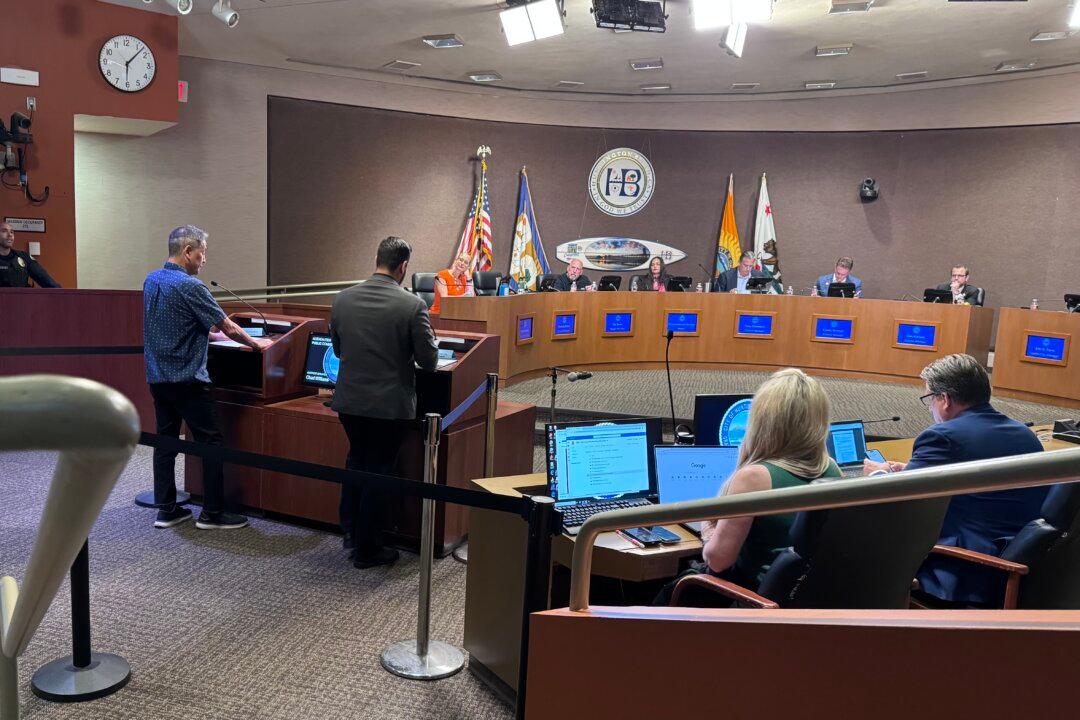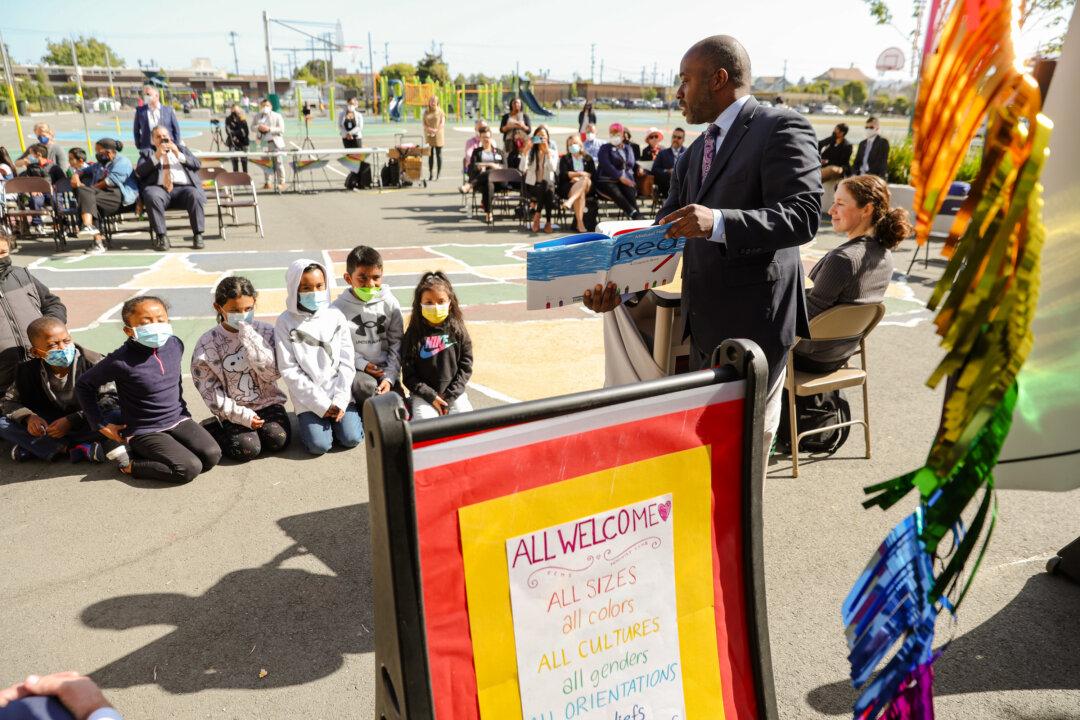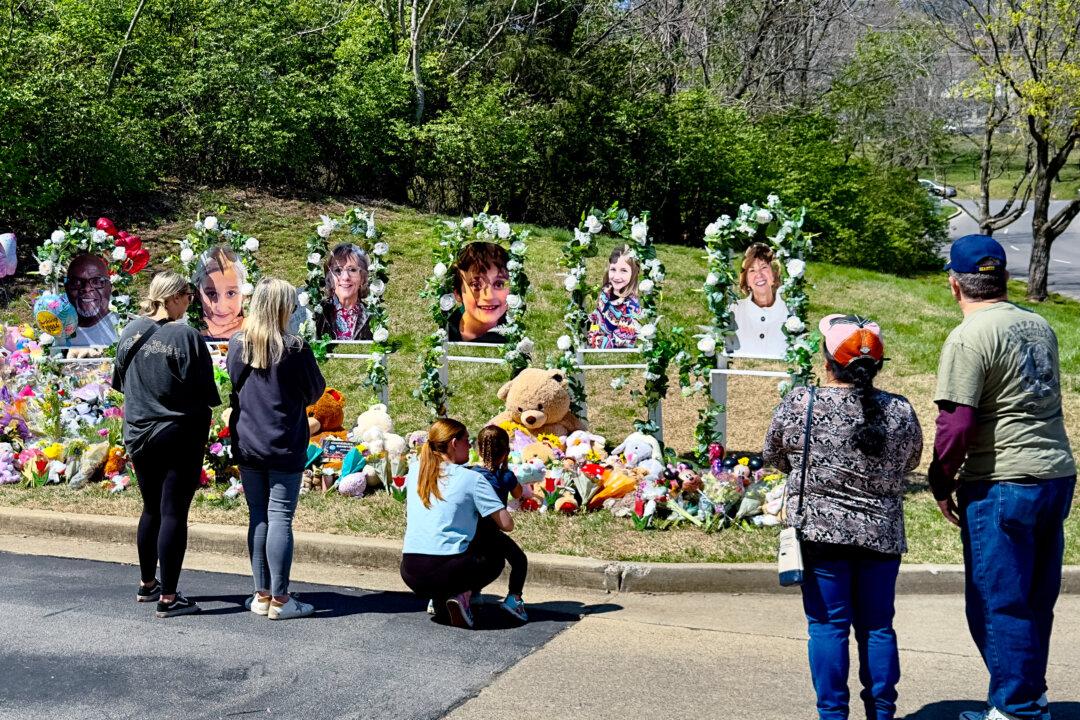Southern California schools worked May 25 with local law enforcement to increase campus security a day after an 18-year-old killed 19 children and two teachers at an elementary school in Texas.
Orange County Sheriff Don Barnes said shortly after the shooting—the second deadliest school shooting in the nation’s history—he would immediately increase deputies at schools in his jurisdiction for the following day, in addition to school police officers.
“No parent should ever have to wonder if their child is safe at school,” Barnes said in his statement. “We extend condolences and prayers to the grieving community of Uvalde.”
Ian Hanigan, a spokesman for the Orange County Department of Education, told The Epoch Times in an email that the department is “[working] closely with the Orange County Sheriff’s Department and other local law enforcement agencies to analyze everything from cyberbullying to securing school facilities.”

The San Bernardino County Sheriff’s Department said in a statement it will work with the county’s patrol stations, school resource officers, school police departments, and others to monitor safety threats.
Maria Garcia, a spokesperson for the San Bernardino City Unified School District, told The Epoch Times in an email it “has made significant upgrades to security protocols districtwide that have resulted in safer campuses,” since three died and one was injured in a 2017 shooting at one of its elementary schools.
Since then, Garcia said, the district has ensured that campus gates and doors are secured while school is in session and installed a single point of entry, with a requirement that all visitors enter through the school office, with a check-in system that requires showing government-issued identification.
In addition, Garcia said, schools in the district practice two lockdown drills per year.

Meanwhile, in Los Angeles, Sheriff Alex Villanueva said after the incident that the district will be “closely monitoring and working with our station’s school resources officers to ensure the safety of our children.”
On May 25, Los Angeles Unified School District (LAUSD) Superintendent Alberto Carvalho announced expanded safety protocols for school campuses.
“Since Columbine, Sandy Hook, Parkland, and now in Uvalde, Texas, we have witnessed that ready access to guns for anyone, including students, without any filter, means that any place in America can become a dangerous place, whether it’s a movie theater, a grocery store, a temple, a church or a school,” Carvalho said. “... As part of the ongoing review of our practices and procedures, we must continue to assess and update safety protocols in order to keep our students, employees and families as safe as possible.”
The district will undergo an assessment of schools’ access points to ensure reduced points of entry, as well as an assessment of protected areas in case of an incident. In addition, LAUSD and LA School Police will explore the use of mobile apps with GPS capability to give first responders access to critical incidents.
In 2013, Los Angeles Unified spent $4.2 million to create about 1,000 unarmed “campus aide” positions in response to the 2012 shooting at an elementary school in Sandy Hook, Connecticut, that left 20 children and six adults dead. That shooting is the worst school shooting in American history.
The issue also rekindled the discussion of if police should be on campuses at all. Some argued in the wake of the 2020 George Floyd killing that they should not.
LA School Police Department Sergeant Rudy Perez told The Epoch Times he believes, however, they are a key part of the “ecosystem” of a school campus.
“Every student deserves a good counselor. Every student deserves a good teacher. And every student deserves a police officer on their campus,” Perez said. “This ecosystem is in place in case something evasive comes in. All these elements—from teachers to cops—help address evasive issues.”
The shooting comes just a year after LAUSD opted to decrease on-campus police presence.
Last February, LAUSD’s school board voted to cut the district’s police budget by one-third and to remove police officers from school campuses in response to police brutality protests after the Floyd killing.
Perez said Los Angeles schools were disrupted by the changes and that many officers left as a result, which cut their ranks from 510 to fewer than 300.





